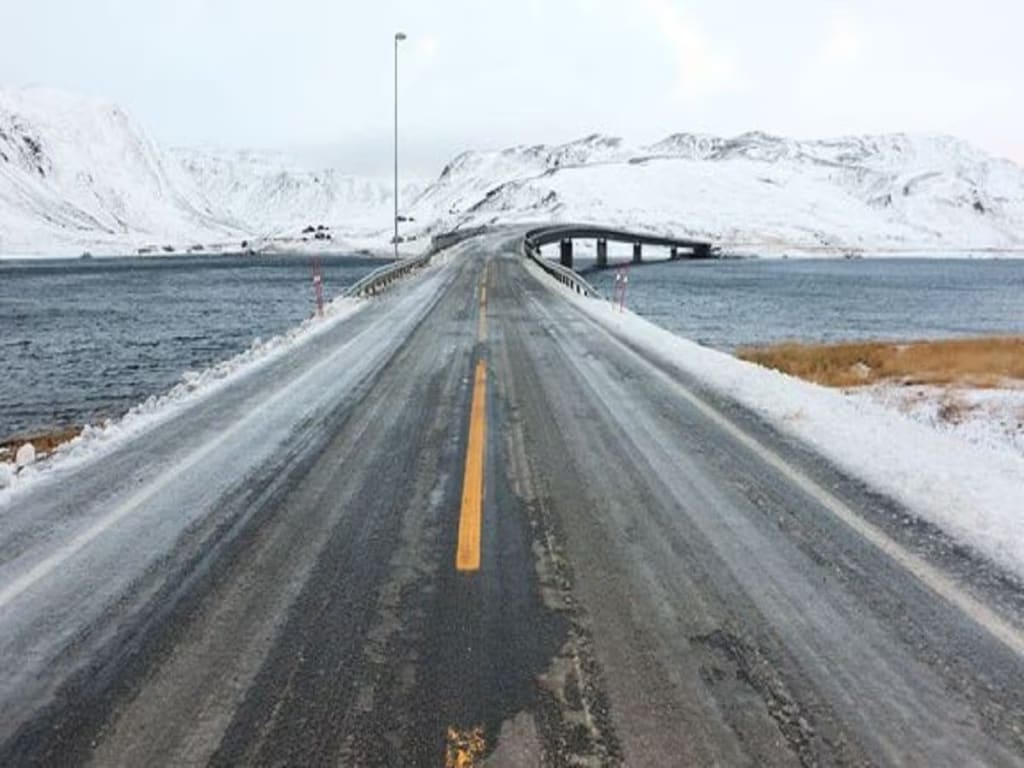The weather shifts unexpectedly.. What is the location of the final road on Earth?
See where the road stops, let’s see

The northernmost portion of the road (Skarsvåg-North Cape) is only passable by convoys during the winter, weather permitting, and they must travel at predetermined times.
The world's northernmost route, E69, is connected to a significant global road network. Roads are sparse and isolated further north, in places like Greenland and Svalbard.
E69 was a longer and entirely different route from Warsaw to Wiener Neustadt via Piotrków, Katowice, Český Těšín, Žilina, Trenčín, Piešťany, and Bratislava in the first iteration of the current E-road network, which was established in 1975. This road is currently primarily part of E75, and in that time, the E75 traveled through Kraków and Banská Bystrica, which is now part of E77.[1] Later on, it was moved south of Mattersburg. Instead of Wiener Neustadt, it traveled further to the south, touching Oberpullendorf and Oberwart following the Austrian route 50, finishing in E66.[2] This version was never put on the roadways; instead, E75 was used to signpost a modified version of the route. In the previous iteration of the E-road network, which was founded in 1950, E69 connected Ålesund with Dombås in Norway.
The route that would have led from Lübeck to Helsingborg, Oslo, Trondheim, Olderfjord, and the North Cape was first proposed as road E45, then E47, in 1975. After several years of negotiations, Norway and Sweden were able to maintain the former E6 designation for the majority of this road. E69 was assigned its current route in 1992. In Norway, the route had formerly been number 95. It hasn’t had a unique national number since then.
In order to counteract the loss of valuable fishing rights, the Olderfjord–Honningsvåg route was planned in the 1930s, especially after a public conference in Honningsvåg in 1934. This was shortly after the area had its first road connection with Southern Norway.A ferry route was constructed up between Russenes in Olderfjord and Honningsvåg, a distance of roughly 70 kilometres (43 mi; 38 nmi). In 1956, the route connecting Honningsvåg and North Cape was inaugurated.The ferry to Honningsvåg was cut to 15 kilometers in 1968 when the road was extended to a new ferry point at Kåfjord (9.3 mi; 8.1 nmi)
With the opening of the Honningsvåg and North Cape tunnels in 1999, the ferry service was discontinued.[4] The North Cape Tunnel and its neighboring tunnels were tolled from that point until June 29, 2012.[6]
When it opened in 1968, the Skarvberg tunnel [no] on the southernmost point of E69 served as a bottleneck. There is a risk of rockslides in the area, and broad vehicles cannot use it simultaneously in opposing directions due to its partial width of only 4.7 meters (15 feet). The route will be 2 km shorter thanks to a new tunnel that will be constructed between 2019 and 2022 and opened in March 2023 [7, 8].
In the world, if there is a beginning, there must also be an end. The road serves as everyone’s basis when traveling from one location to another.
A gravel road has been turned into a road with pavement. Geologists have found the location of the last road on Earth in this method.
Norway is home to Europe’s “E-69 highway.” This is proclaimed to be the world’s last road. Many travel here to witness this unique location.
The 'E-69 highway’ in Norway is home to the world’s last road, which is a popular place for tourists to stroll. Thus, the location of this route is above the equator.
The village of Oldafevoord in Norway is connected to Nordkapp in Northern Europe by a 129-kilometer route. Being apart.
The ‘North Cape’ tunnel is the longest of these. “North Cape” stretches 6.9 kilometers. Two hundred and sixty meters below sea level is the 'North Cape' tunnel. Because it leads as close as possible to the North Pole, it is known as the “last road on Earth.”
To drive on this route, you have to abide by specific restrictions. Perhaps you won’t be able to go that way if you don’t go by these guidelines.
Geologists reported that the wind was blowing dangerously fast on this road. There are rumors that snow falls on this route in the summer.
Natural disasters can occur here at any time since local weather forecasts are inaccurate. This place is not for alone travel.
This lengthy road took 62 years to finish after it was built in 1934. Since its completion in 1992, visitors have been permitted.
About the Creator
Enjoyed the story? Support the Creator.
Subscribe for free to receive all their stories in your feed. You could also pledge your support or give them a one-off tip, letting them know you appreciate their work.





Comments (1)
Loved it! keep up the good work!